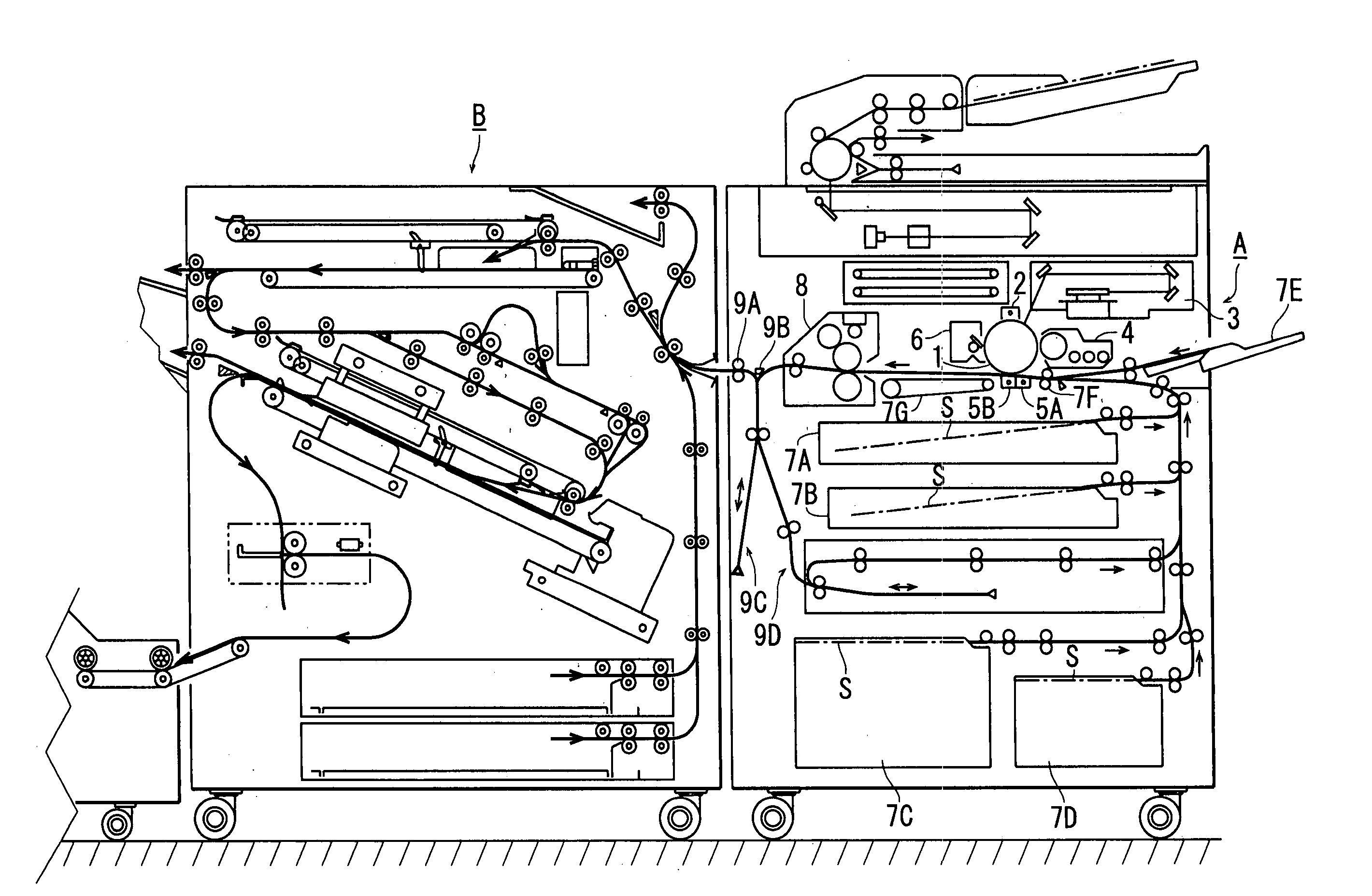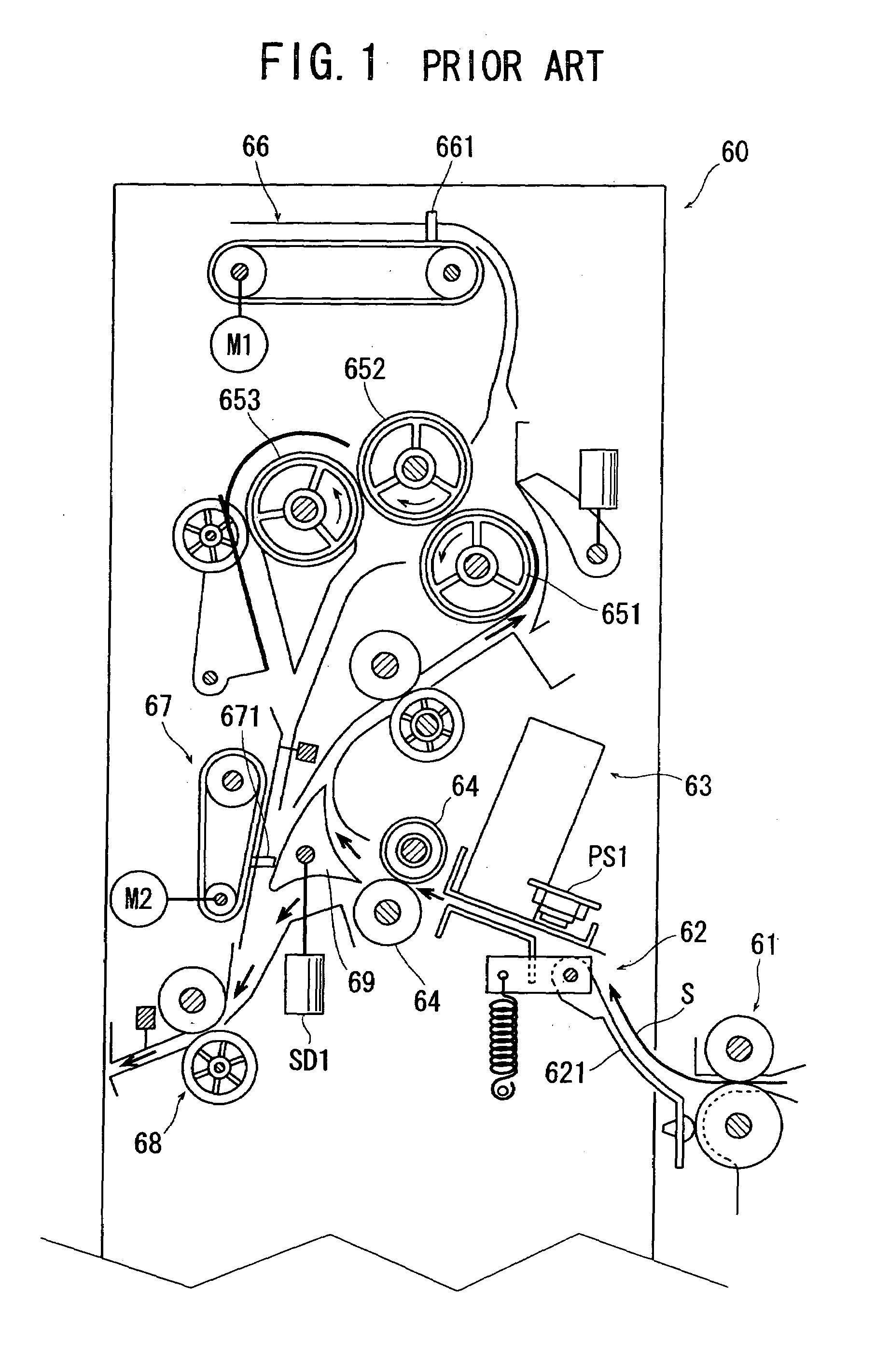Sheet postprocessing apparatus for use with image forming apparatus and folding method
a postprocessing apparatus and image forming technology, applied in electrographic processes, instruments, transportation and packaging, etc., can solve the problems of unstable folding position, damage to creases or damage on the sheet, etc., to improve the appearance quality of the folded sheet, prevent damage to the transfer sheet and the fold of the sheet, and stable folding process
- Summary
- Abstract
- Description
- Claims
- Application Information
AI Technical Summary
Benefits of technology
Problems solved by technology
Method used
Image
Examples
first embodiment
(2-5A) First Embodiment of Sheet Folding Section 50
[0090]The sheet folding section 50 of the first embodiment is comprised of a first folding section 51, a convey roller R8, convey paths 53, 54, 55, and 56, and a bypass convey path 57.
[0091]The folding section 51 performs the first folding process in an internal three-fold process or a center folding process with an image-formed surface facing outside for the sheet S that has passed through a convey path above the convey path switching means G3 and traveled to the sheet folding section 50.
[0092]The first folding section 51 is comprised of folding rollers 511 and 512 which come into tight contact with each other and rotate, a driven roller 513 which is detachably brought into contact with the folding roller 511 to be driven / rotated, and a driven roller 514 which is detachably brought into contact with the folding roller 512 to be driven / rotated.
[0093]The sheet S conveyed to the first folding section 51 passes through an opposing posi...
second embodiment
(2-5B) Second Embodiment of Sheet Folding Section 50
[0097]As is obvious from FIG. 7B, a sheet folding section 50 according to the second embodiment is comprised of a first folding section 51, convey rollers R8, a second folding section 52, convey paths 53, 54, 55, and 56, and a bypass convey path 57.
[0098]The first folding section 51 performs the first folding process in an internal three-fold process, the first folding process in a Z-fold process, or a center folding process with an image-formed surface facing outside for the sheet S that has passed through a convey path above a convey path switching means G3 shown in FIG. 6B and traveled to the sheet folding section 50. The respective operations will be described later with reference to FIGS. 12A to 12C, 13A to 13C, and 15A to 15C.
[0099]The sheet S folded by the first folding section 51 passes through the convey path 53, is discharged while being clamped by the convey rollers R8, and travels to the second folding section 52. The s...
PUM
| Property | Measurement | Unit |
|---|---|---|
| pressure | aaaaa | aaaaa |
| diameters | aaaaa | aaaaa |
| diameter | aaaaa | aaaaa |
Abstract
Description
Claims
Application Information
 Login to View More
Login to View More - R&D
- Intellectual Property
- Life Sciences
- Materials
- Tech Scout
- Unparalleled Data Quality
- Higher Quality Content
- 60% Fewer Hallucinations
Browse by: Latest US Patents, China's latest patents, Technical Efficacy Thesaurus, Application Domain, Technology Topic, Popular Technical Reports.
© 2025 PatSnap. All rights reserved.Legal|Privacy policy|Modern Slavery Act Transparency Statement|Sitemap|About US| Contact US: help@patsnap.com



